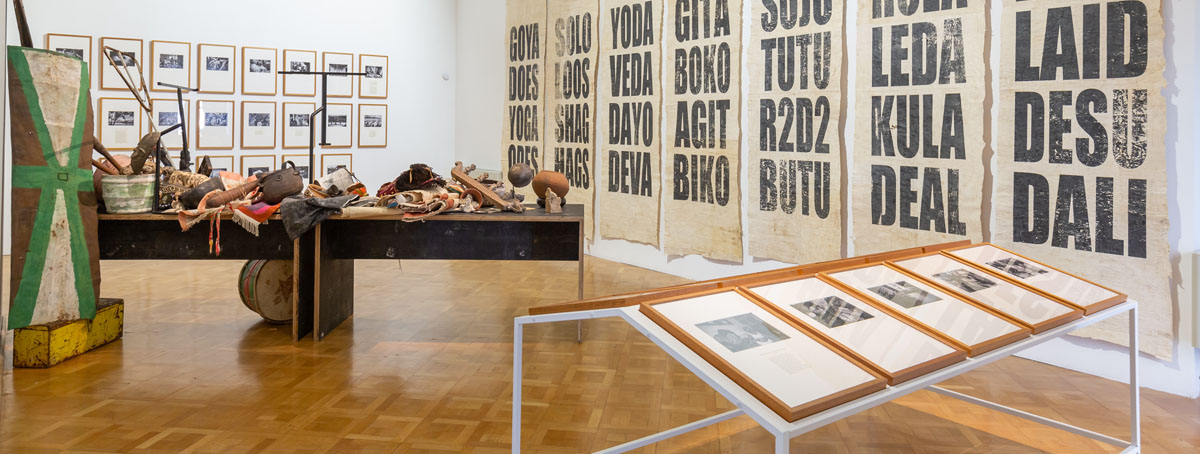EXHIBITIONS · The Museum of Modern Art Dubrovnik
TONY CRAGG
SCULPTURE
22.7. - 5.10.2025.
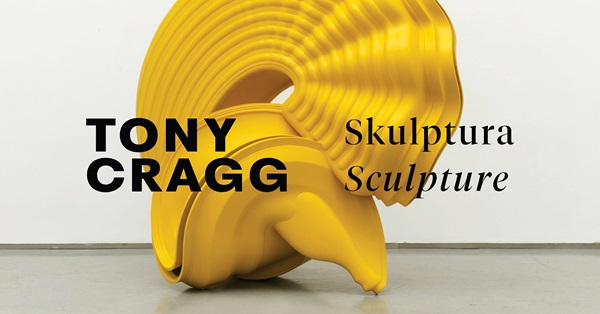
The exhibition curator and project manager are Jelena Tamindžija Donnart, the curator of the Museum of Modern Art Dubrovnik, and the exhibition collaborator is Detmar Westhoff, a German art historian and curator.
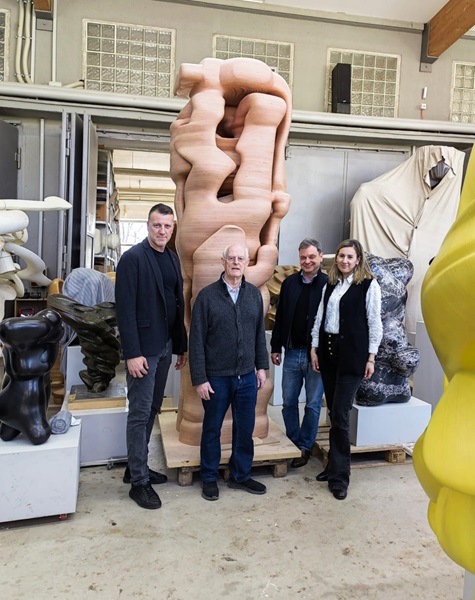
After graduating from the Royal College of Art in London, Tony Cragg's artistic work constantly attempts to find new relationships between people and the material world, not limiting himself to the choice of materials in his creations. He considers sculpture to be a study of how material and forms influence and shape our ideas and feelings.
Tony Cragg represented Great Britain at the 43rd Venice Biennale and held solo exhibitions at the Tate Gallery (London), where he was awarded the renowned Turner Prize, at the Museo Nacional Centro de Arte, Reina Sofia (Madrid), Louvre (Paris), Kunstapalast (Dusseldorf), Istanbul Modern (Istanbul), CAFA Museum (Beijing), Hermitage Museum (St. Petersburg), Nasher Sculpture Center (Dallas, Texas).
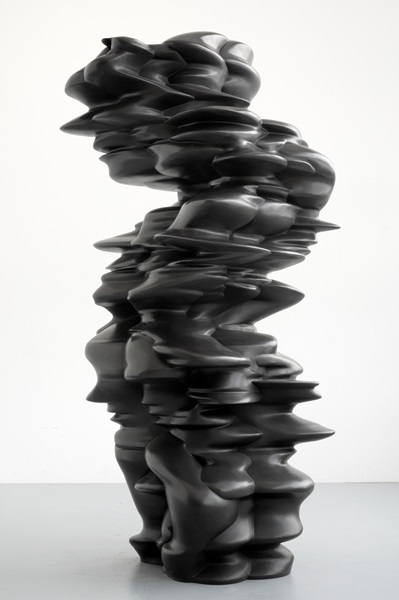
It is, It isn't_#04_242x120x110_bronze_2010_Charles Duprat
At the exhibition at the Museum of Modern Art Dubrovnik, Cragg will present a selection of around 30 sculptures, and his drawings and sketches for sculptures will also be on display. The exhibition, which will encompass the first two floors of the museum and the terraces, will also include an additional exhibition space in the garden area of the Banac Palace. The exhibition is conceived as a kind of retrospective of the author who is presenting himself to the Dubrovnik audience for the first time, and the selection of sculptures will also show his iconic works dating back to his first award-winning exhibition projects from 1985. These unique installations consist of space and floor mosaics that blur the line between natural and artificial landscapes. Of particular note are the cycles entitled "Early Forms", in which he attempts to sculpturally reflect on the transformation of objects that are familiar to us from everyday life and, through their repurposing and change, bring additional social and emotional meanings to them. The sculptures of monumental dimensions are made of bronze, steel, corten steel, wood, fiberglass, and plastic.
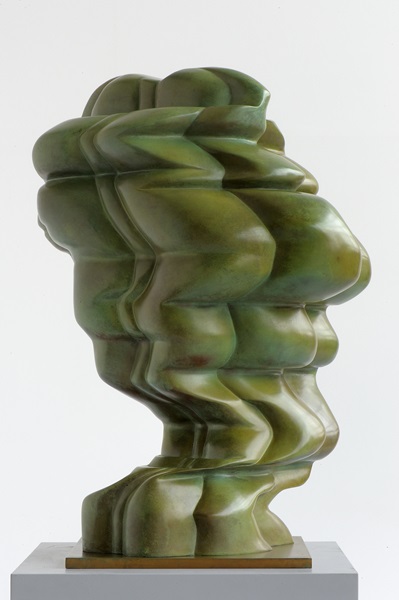
Woman's Head_#05_87x60x50_bronze_2007_Charles Duprat
Tony Cragg has been working and exhibiting since 1969. He studied at the Royal College of Art in London and has lived in Wuppertal since 1977. He has participated in Documenta 7 and 8 and represented Britain at the Biennale in Venice in 1988. He is recipient of the Turner Prize at the Tate Gallery, London in 1988, the prestigious Praemium Imperiale Award, Tokyo in 2007 and the Lifetime Achievement in Contemporary Sculpture Award in 2017.
He held professorships in the Akademie der Künste in Berlin and Kunstakademie Düsseldorf, where he was director from 2009 to 2013. He has exhibited extensively in museums worldwide e.g.: Tate Gallery, London (1988), Stedelijk Van Abbemuseum, Eindhoven and Kunstsammlung Nordrhein-Westfalen, Duesseldorf (1989), Scottish National Gallery of Modern Art, Edinburgh and Musée du Louvre, Paris (2011), Lehmbruck Museum, Duisburg (2013), Von der Heydt-Museum, Wuppertal, Hermitage Museum, St. Petersburg (2016), Boboli Gardens, Florenz (2019), MuBE, Sao Paulo (2019), Houghton Hall, Norfolk (2021), Albertina Wien (2022), Staatliche Graphische Sammlung München (2023), Museu Nacional de Arte Contemporanea, Lissabon (2023), Kunstpalast Düsseldorf (2024), Castle Howard, UK (2024) and Terme di Diocleciano, Rom (2024).
80 YEARS OF THE MUSEUM OF MODERN ART DUBROVNIK
22.5. - 13.7.2025.
The authors of the exhibition were Petra Golušić, museum advisor of the Museum of Modern Art Dubrovnik, Jelena Tamindžija Donnart, curator of the Museum of Modern Art Dubrovnik, and Rozana Vojvoda, museum advisor of the Museum of Modern Art Dubrovnik.
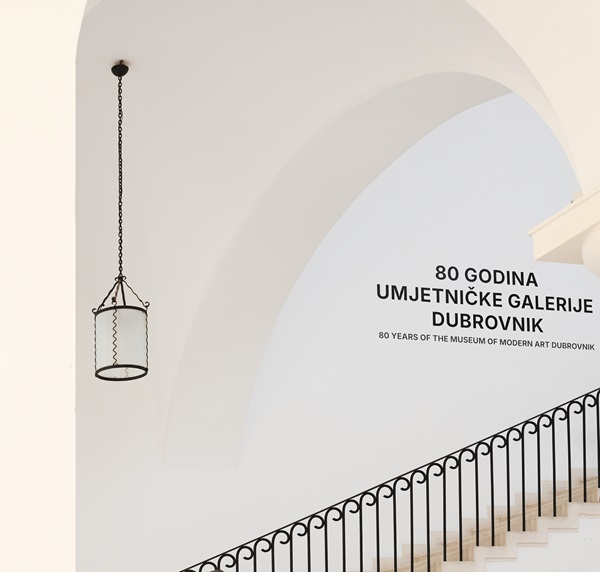
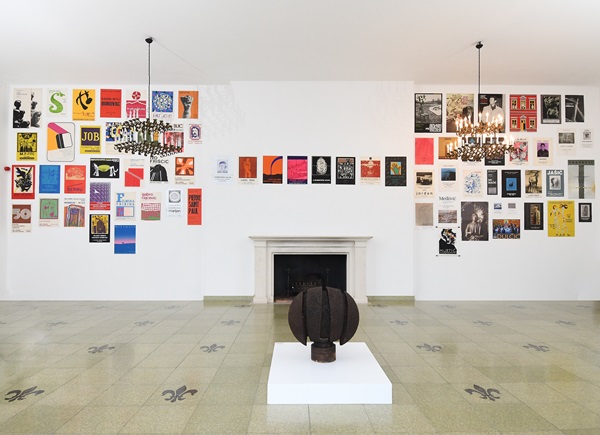
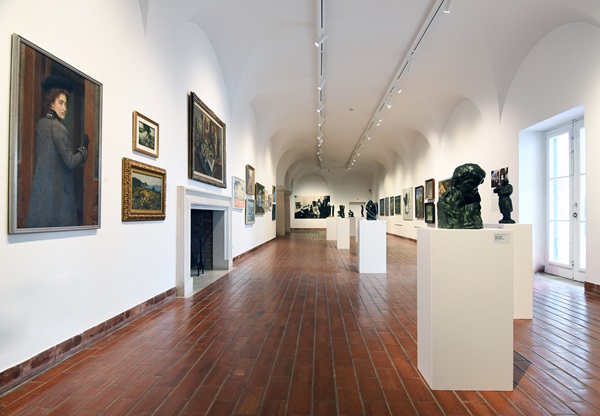
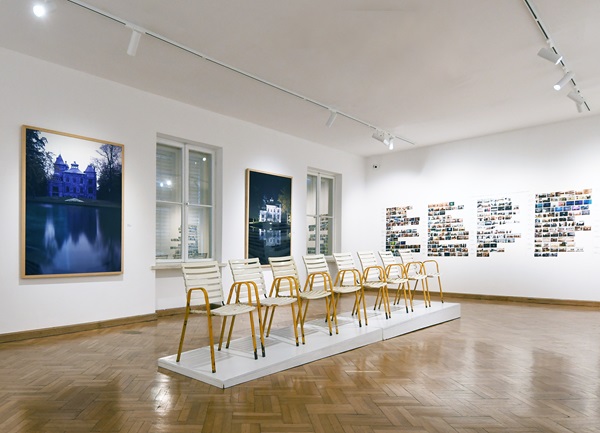
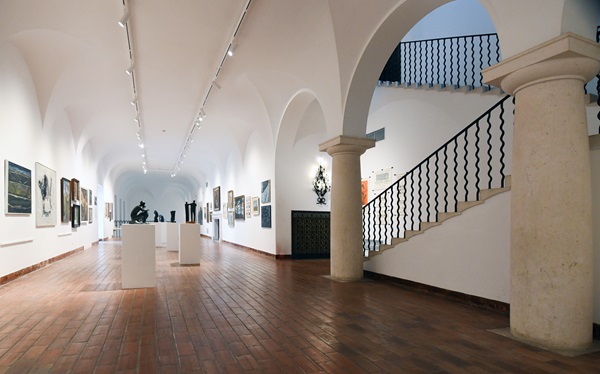
The exhibition 80 Years of the Museum of Modern Art Dubrovnik in the form of a time machine presents the dynamic eighty-year history of the Museum of Modern Art Dubrovnik, which has become a vibrant place of interaction between art and the public through numerous exhibitions, art workshops, expert tours and lectures. The Museum of Modern Art Dubrovnik was initially located in the Crijević Pucić summer house, and from 1948 to the present day it has been located in the Banac villa in Ploče, a building designed by Lavoslav Horvat and Harold Bilinić from 1937 to 1939 and which represents an exceptional achievement of interwar Croatian architecture. The materials that were displayed contain extensive photo documentation of contemporary and modern art exhibitions, international exhibitions, lectures, events, art workshops, and promotions, from archival to recent photographs. Numerous archival posters and catalogues are presented, as well as works from the Collection of Modern and Contemporary Art in a chronological order from its foundation to the present day. The collection of the Museum of Modern Art Dubrovnik provides a very clear insight into the time period from the beginning of modern art in Croatia, at the turn of the nineteenth and twentieth centuries, through the various stylistic trends of the twentieth century to contemporary tendencies in art on the Dubrovnik and Croatian scene.
As part of the exhibition 80 years of the Museum of Modern Art Dubrovnik, a virtual exhibition Outside the Frames was installed, authored by Ivona Šimunović, and produced and technically supported by Pixel design and Loop production. The exhibition creates new multimedia audio-visual experiences and sensations through new presentation flows that incorporate existing museum content. As such, it will further emphasize emotions and reactions and establish new communication processes. It is precisely thanks to these new ways of presentation that the museum object comes to the center of the story, even more emphasized and intense, almost like the main character of a film, which thoughtfully and selectively conquers its audience, a generation marked by a new and dynamic time of constant change and development.
.jpg)
VANIŠTA
RETROSPECTIVE
Author of the exhibition: Zdenko Tonković
Curator and exhibition layout: Ivona Šimunović
21.3. - 11.5.2025.
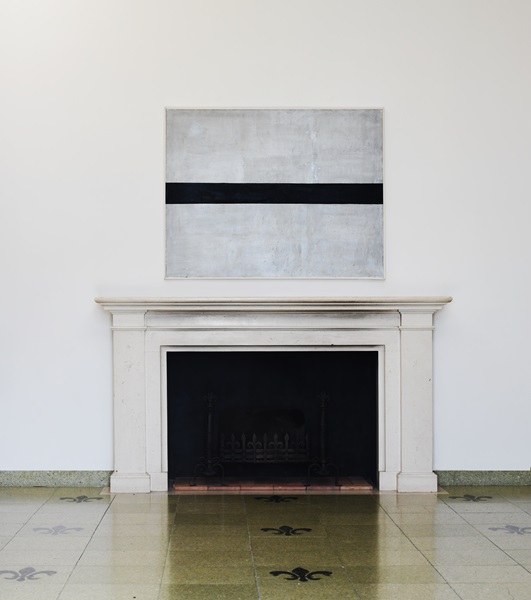
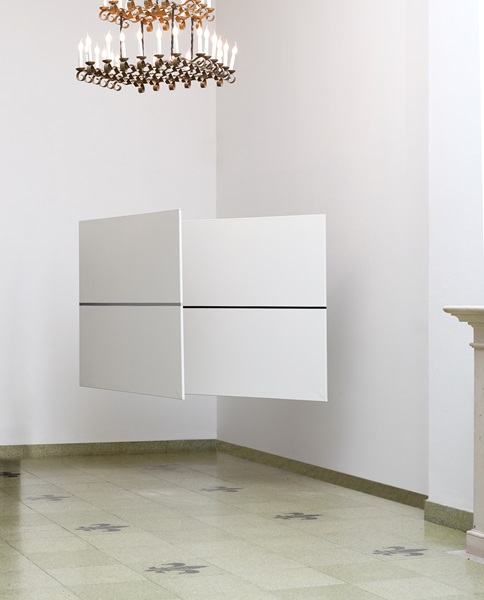
.jpg)
.jpg)
.jpg)
The retrospective exhibition of one of the most important Croatian artists, Josip Vaništa, entitled VANIŠTA, is also the first exhibition of the Museum of Modern Art Dubrovnik in the anniversary exhibition program of the 80th anniversary of its founding.
The author of the exhibition is art historian Zdenko Tonković, who wrote three monographs about Josip Vaništa (Vaništa's own publishing house in 1983, Naprijed in 1993, Kratis in 2004), participated in the preparation of Vaništa's book of drawings (Liber University Publishing House, 1979; the first Vaništa book), wrote numerous forewords and articles about Vaništa's work, and ultimately became close friends with the author over a long period of time. The curator of the exhibition is Ivona Šimunović, who is also the author of the exhibition's layout.
This major retrospective exhibition at the Dubrovnik Art Gallery is the first solo presentation of this important artist in Dubrovnik. The exhibition presents the artist's entire life's work, and almost 180 works are on display, and in addition to works from the holdings of the Dubrovnik Art Gallery, works were loaned from the National Museum of Modern Art, the Museum of Contemporary Art Zagreb, the Art Gallery Split, the Karlovac City Museum, the Museum of Fine Arts Osijek, the City Museum of Rovinj, the Art Gallery Slavonski Brod, the National and University Library Zagreb, the Faculty of Mining, Geology and Petroleum in Zagreb, the Josip Vaništa Foundation, the Vugrinec Varaždin Collection, the Anišić Collection, the Krajačić Collection, and numerous private lenders. The exhibition also presents original archival documentation from the Gorgona period that has never been exhibited before.
Josip Vaništa (1924–2018) is one of the most significant Croatian artists: a painter, an artist of new practices, a writer, and a pedagogue. The significance of Vanište for Croatian art is also evidenced by the fact that since the beginning of March his work has been on display in the permanent exhibition of one of the world's most important museums, MoMA in New York, as part of an exhibition dedicated to the Zagreb art scene of the 1960s in collaboration with MoMA and the Zagreb Academy of Fine Arts, which will last for three years.
This major retrospective exhibition at the Dubrovnik Art Gallery is the first solo presentation of this important artist in Dubrovnik. The exhibition presents the artist's entire life's work, and almost 180 works are on display, and in addition to works from the holdings of the Dubrovnik Art Gallery, works were loaned from the National Museum of Modern Art, the Museum of Contemporary Art Zagreb, the Art Gallery Split, the Karlovac City Museum, the Museum of Fine Arts Osijek, the City Museum of Rovinj, the Art Gallery Slavonski Brod, the National and University Library Zagreb, the Faculty of Mining, Geology and Petroleum in Zagreb, the Josip Vaništa Foundation, the Vugrinec Varaždin Collection, the Anišić Collection, the Krajačić Collection, and numerous private lenders. The exhibition also presents original archival documentation from the Gorgona period that has never been exhibited before.
Josip Vaništa (1924–2018) is one of the most significant Croatian artists: a painter, an artist of new practices, a writer, and a pedagogue. The significance of Vanište for Croatian art is also evidenced by the fact that since the beginning of March his work has been on display in the permanent exhibition of one of the world's most important museums, MoMA in New York, as part of an exhibition dedicated to the Zagreb art scene of the 1960s in collaboration with MoMA and the Zagreb Academy of Fine Arts, which will last for three years.
At Museum of Modern Art Dubrovnik, this significant retrospective exhibition is the first sole presentation of this important artist in Dubrovnik. The artist's entire life's work is showcased in the exhibition, with almost 180 works on display. In addition to works from the holdings of the Museum of Modern Art Dubrovnik, works were loaned from the National Museum of Modern Art, the Museum of Contemporary Art Zagreb, the Art Gallery Split, the Karlovac City Museum, the Museum of Fine Arts Osijek, the City Museum of Rovinj, the Art Gallery Slavonski Brod, the National and University Library Zagreb, the Faculty of Mining, Geology and Petroleum in Zagreb, the Josip Vaništa Foundation, the Vugrinec Varaždin Collection, the Anišić Collection, the Krajačić Collection, and numerous private lenders. The exhibition also presents original archival documentation from the Gorgona period that has never been exhibited before.
Josip Vaništa (1924–2018) is one of the most significant Croatian artists. He is a painter, an artist of new practices, a writer, and a pedagogue. The significance of Vaništa for Croatian art is also evidenced by the fact that since the beginning of March his work has been on display in the permanent exhibition of one of the world's most important museums, MoMA in New York, as part of an exhibition dedicated to the Zagreb art scene of the 1960s in collaboration with MoMA and the Zagreb Academy of Fine Arts, which will last for three years.
Short biography:
Josip Vaništa was born on May 17, 1924, in Karlovac, where he graduated in 1943. He graduated from the
Academy of Fine Arts in Zagreb in 1948, at the Teaching Department, and continued his specialization in painting for a year in the class of Marino Tartaglia. He was employed as an assistant in the Drawing Department at the then Faculty of Technology and Architecture of the University of Zagreb in 1951. He was appointed assistant professor in 1964, associate professor in 1970, and full professor in 1980. He retired in 1994. He was elected an associate member of the Department of Fine Arts of the Croatian Academy of Sciences and Arts in 1992, and a full member two years later. He had his first exhibition in 1952 with Miljenko Stančić at the Museum of Arts and Crafts. He is the recipient of numerous awards and recognitions, and in 2006 he received the Vladimir Nazor Award for Lifetime Achievement. He died in Zagreb on March 24, 2018.
Artists on Artists – A Visual Panopticon
organised by the Museum of Modern Art in Dubrovnik and the National Museum of Modern Art from Zagreb
Curator: Lada Bošnjak Velagić
19.12.2024. - 9.3.2025.
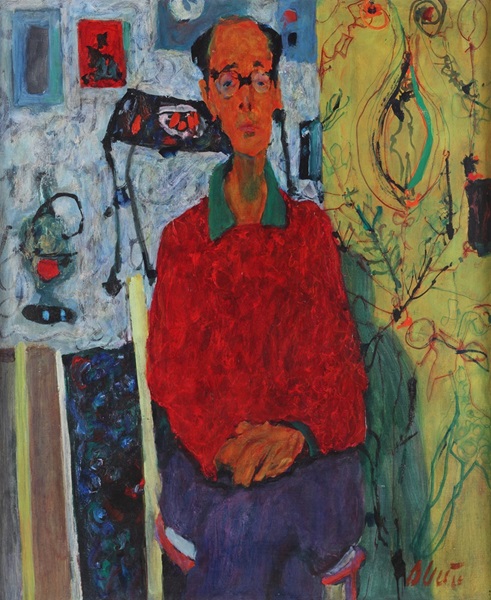
Ivo Dulčić, Portrait of Antun Masle, 1965, NMMU Collection
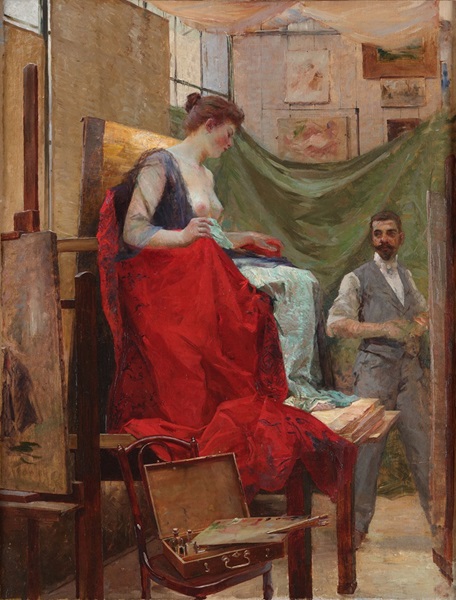
Vlaho Bukovac, Portrait of Bela Čikoš in the Studio, 1896, Vugrinec Collection
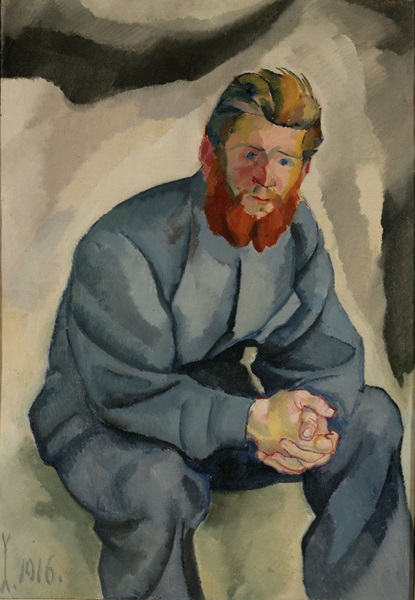
Zlatko Šulentić, Man with a Red Beard, 1916, NMMU Collection
The exhibition showcases approximately eighty portraits in which artists depict their peers in the mediums of painting, sculpture, graphic art, and photography. It highlights the complexity of the relationship between the portraitist and the subject, as well as the interplay between artists and the wider cultural and social milieu. Curated by Lada Bošnjak Velagić, a museum advisor at the National Museum of Modern Art in Zagreb, the selection of major works is based on the NMMU collection, with several pieces loaned from private collections. This exhibition was initially presented at the National Museum of Modern Art in 2022, and it will be further enriched at the Museum of Modern Art in Dubrovnik with works from MoMAD’s own collection, selected by museum advisor Rozana Vojvoda.
The exhibition explores the complexity of relationships among artists within a broader cultural and social framework, “portraying” our art scene from the late 19th century to the present day. It presents visitors with the personal, collaborative, mentoring, patronage, and other connections that have defined key figures in our visual arts during this period. For instance, the mutual portraits of Vlaho Bukovac and Bela Čikoš Sesija, as well as Bukovac’s portrait of Mirko Rački, explore the mentoring, friendship, and collegial bonds between these artists, alongside the influence of Izidor Kršnjav, the division within the Society of Arts, and the emergence of Croatian modern art in 1898.
The exhibition features a range of artists both as portraitists and subjects (Stanoje Jovanović as Šulentić’s “Man with a Red Beard”, Ivo Dulčić, Marta Ehrlich, Ksenija Kantoci, Krsto Hegedušić, Nino Vranić…), with particularly engaging combinations of self-portraits alongside portraits of fellow artists, such as Milivoj Uzelac with Vilko Gecan or Matko Trebotić with Joseph Beuys. A more personal section of the exhibition presents numerous portraits dedicated to married couples (e.g., Ruža Klein and Ivan Meštrović, Nasta Rojc and Branko Šenoa, Marta Ehrlich and Kamilo Tompa, Mila Kumbatović and Oton Gliha, Lujza Kuzmić and Karlo Mijić, Vesna Sokolić and Milan Berbuč).





